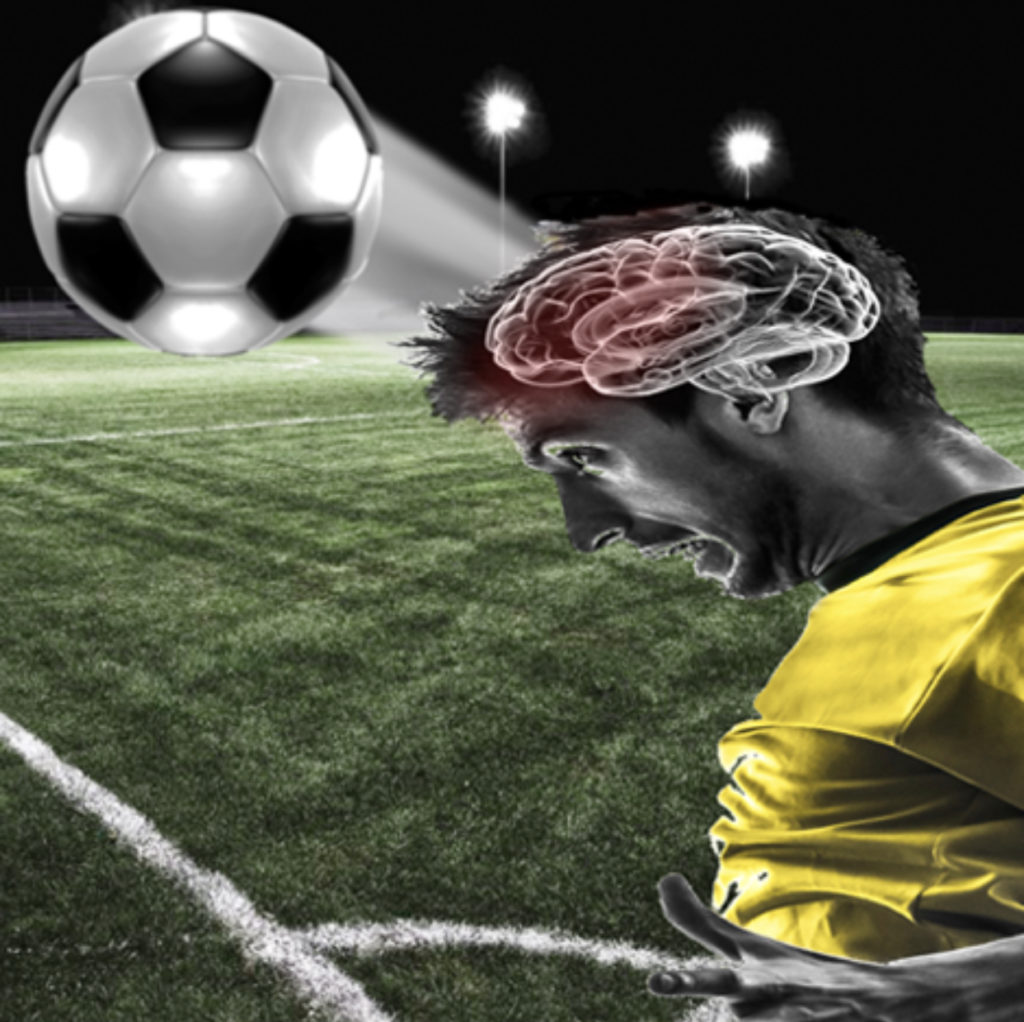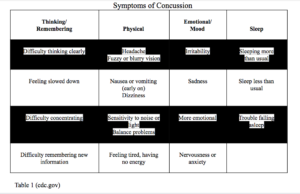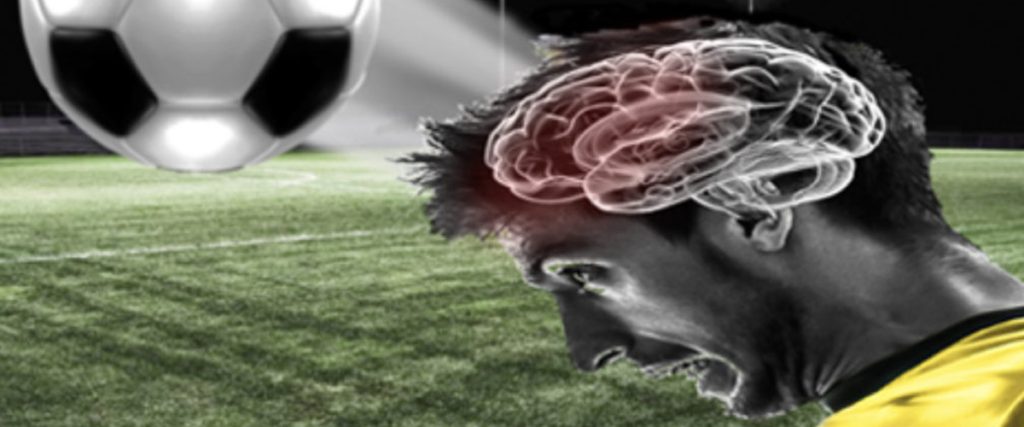
Recently, the topic of head injuries, including concussions, has rapidly come to the forefront of sports medicine. The prevalence of head and neck injuries in all sports has led to an increased awareness and education on concussions; what they are, how they occur, and how they’re diagnosed. However, risk factors related to demographics and optimal treatment approach to a diagnosed concussion is still evolving. The “boom” of the concussion topic begs the question: why are there so many concussions? Are our bodies prone to head injury? Is there something we can do to decrease risk for a head injury?

Recent studies have shown that women take longer to recover from a TBI (traumatic brain injury), report more symptoms and receive more concussions than men in similar sports, possibly due to neuroanatomical differences, weaker neck muscles and hormonal changes. Hormones and the physiology of women’s necks and upper bodies are two possible reasons why women experience concussions differently than men.1
Specifically in the sport of soccer, concussions are recorded to occur just as frequently as they occur in football and ice hockey, with the risk being higher in goalkeepers, females, and youth.2 Head-to-head contact is the most common mechanism for concussion diagnosis in soccer, while heading the ball is not a common cause. Many head-to-head contact injuries occur accidentally, or unintentionally, but there is less understanding of how intentional head impacts (i.e. heading in soccer) can also cause brain injury and affect cognitive function.
Although concussions have been the “hot topic” in recent years, all head injuries are not diagnosed as concussions. In soccer, intentional head impacts (i.e. heading the ball) have been shown to worsen cognitive function, specifically associated with frequent ball heading, rather than unintentional head impacts due to collisions.3 Furthermore, another study revealed that kids between the ages of 9 and 11 who experienced at least one “subconcussive” impact associated with heading the soccer ball showed decreased cognitive test scores. These changes in cognition showed variation in gender, suggesting girls had memory changes, whereas boys had processing changes.4
Another study has shown that heading soccer balls is more damaging to the female brain than the male brain. These findings suggest that gender-specific guidelines for soccer heading may be required. Researchers suggest that females are more at risk for brain injury associated with heading a soccer ball due to differences in neck strength, sex hormones or genetics.5
Not only does heading in soccer cause head injury, but it can also lead to neck injuries associated with the cervical spine. These potential injuries include muscle strains, ligamentous sprains, compressive disc injuries and joint injuries.
With all this risk for injury associated with heading the soccer ball, what should be done about it? Some researchers, after analyzing the data of their respective studies, have considered the question of whether or not heading should be allowed, but realized that that would be unrealistic. They have also posed rules and heading restrictions that are gender-based and age-based.
Research is providing evidence that neck muscle development and protective headgear may play a role in the prevention of head injuries, specifically concussions.2 Additional research has found that cervical spine biomechanics is a modifiable risk factor in reducing sports-related concussions. This being said, preventative treatment of head injuries can be geared towards improving cervical spine biomechanics and postural education.6
Furthermore, a combination of cervical and vestibular physiotherapy has decreased the medical clearance time to return to sport in youth and young adults with persistent symptoms of dizziness, neck pain and/or headaches following a sport-related concussion.7 Therefore, the employment of both cervical and vestibular exercises to accelerate recovery and return to sport is important.
Historically, treating a concussion has been quite passive, physicians and sports medicine staff relying heavily on pure rest to allow for the brain to heal and recover from the traumatic and potentially damaging event. Progressive research and evidence are now suggesting that an active approach to all types of head injury recovery is the most appropriate for returning an athlete to normal activities of daily living and his/her sport. This includes a multi-modal approach of collaboration among health care professionals who are able to apply their respective areas of expertise to a patient-centered recovery.8
Please contact us at Elevate to set up an appointment for an active approach to your PT treatment plan following a head or neck injury.
References:
- Covassin, T., Swanik, C.B., & Sachs, M.L. (2003). Sex differences and the incidence of concussions among collegiate athletes. J Athl Training, 38(3), 238-244.
- Al-Kashmiri, A., & Delaney, J. S. (2006). Head and neck injuries in football (soccer). Trauma, 8(3), 189–195. https://doi.org/10.1177/1460408606071144.
- Stewart, W.F., Kim, N, Ifrah, C, Sliwinski, M, Zimmerman, M.E., Kim, M, Lipton, R.B., Lipton, M.L. Heading frequency is more strongly related to cognitive performance than unintentional head impacts in amateur soccer players. Frontiers in Neurology, 2018; 9 DOI: 10.3389/fneur.2018.00240
- Lopez-Roman, LR, Diaz-Rodriguez, YI. Are subconcussive impacts harmless in youth soccer players?: 1965 Board #226 May 31 3. Medicine & Science in Sports & Exercise. 50. 475. 10.1249/01.mss.0000536644.03929.cd.
- Rubin, TG, Catenaccio, E, Fleysher, R, Hunter, LE, Lubin, N, Stewart, WF, Kim, M, Lipton, RB, Lipton, ML. MRI-defined white matter microstructural alteration associated with soccer heading is more extensive in women than men. Radiology 2018 289:2, 478-486.
- Streifer, M, Brown, AM, Porfido, T, Anderson, EZ, Buckman, J, Esopenko, C. The potential role of the cervical spine in sports-related concussion: clinical perspectives and considerations for risk reduction. J Orthop Sports Phys Ther. 2019 Jan 15:1-22. doi: 10.2519/jospt.2019.8582.
- Schneider, KJ, Meeuwisse, WH, Nettel-Aguirre, A, Barlow, K, Boyd, L, Kang, J, et al. Cervicovestibular rehabilitation in sport-related concussion: a randomised controlled trial. Br J Sports Med. (2014) 48:1294–8. 10.1136/bjsports-2013-093267.
- Ries E. (2017 March). Beyond rest: physical therapists and concussion management. PT in Motion, 18-27.

